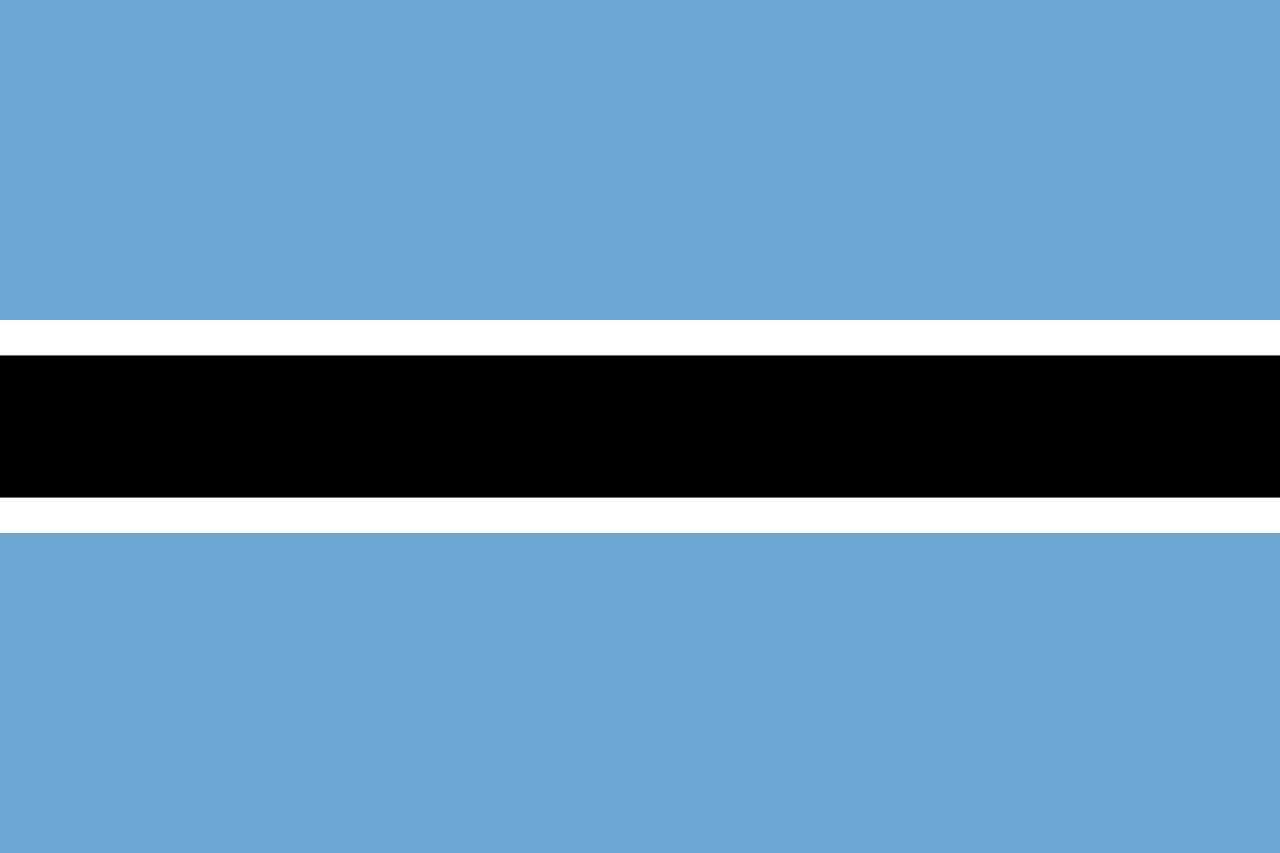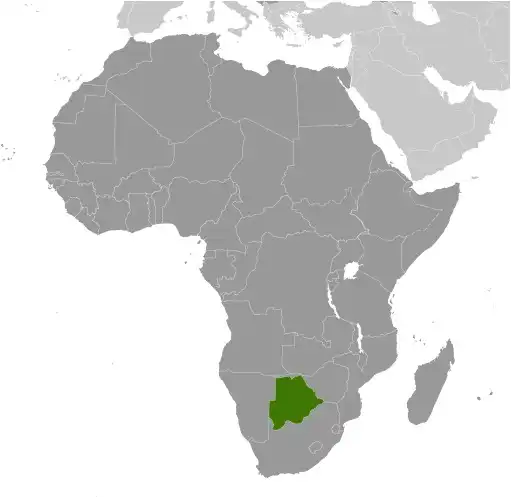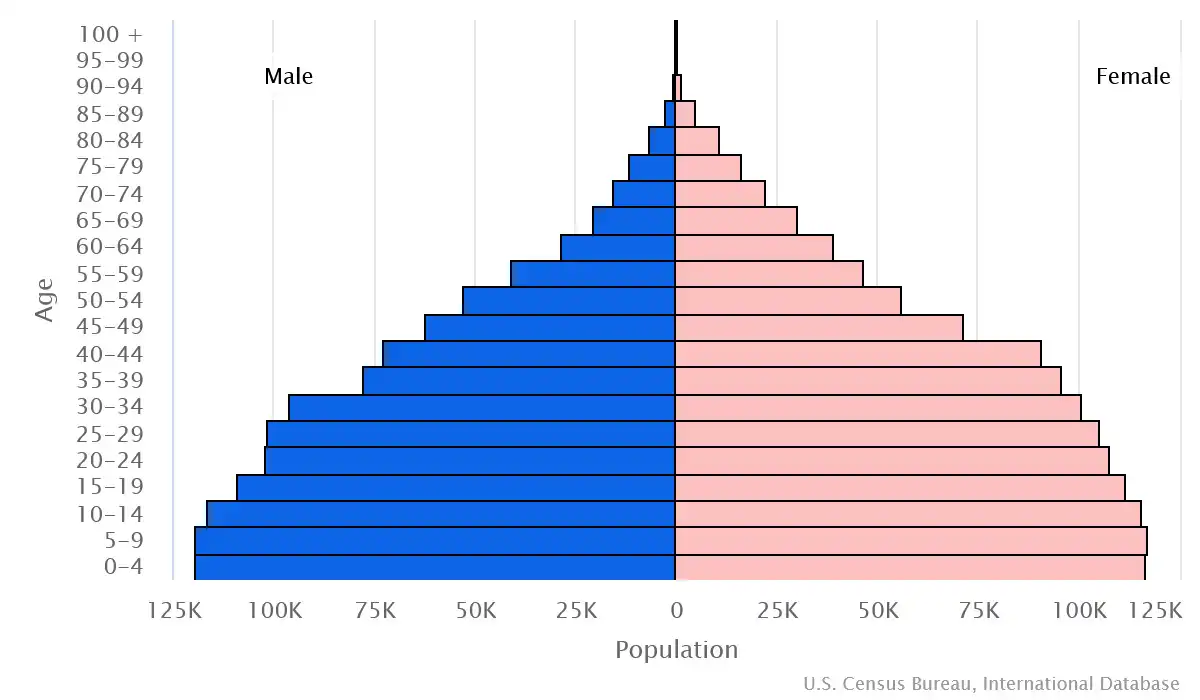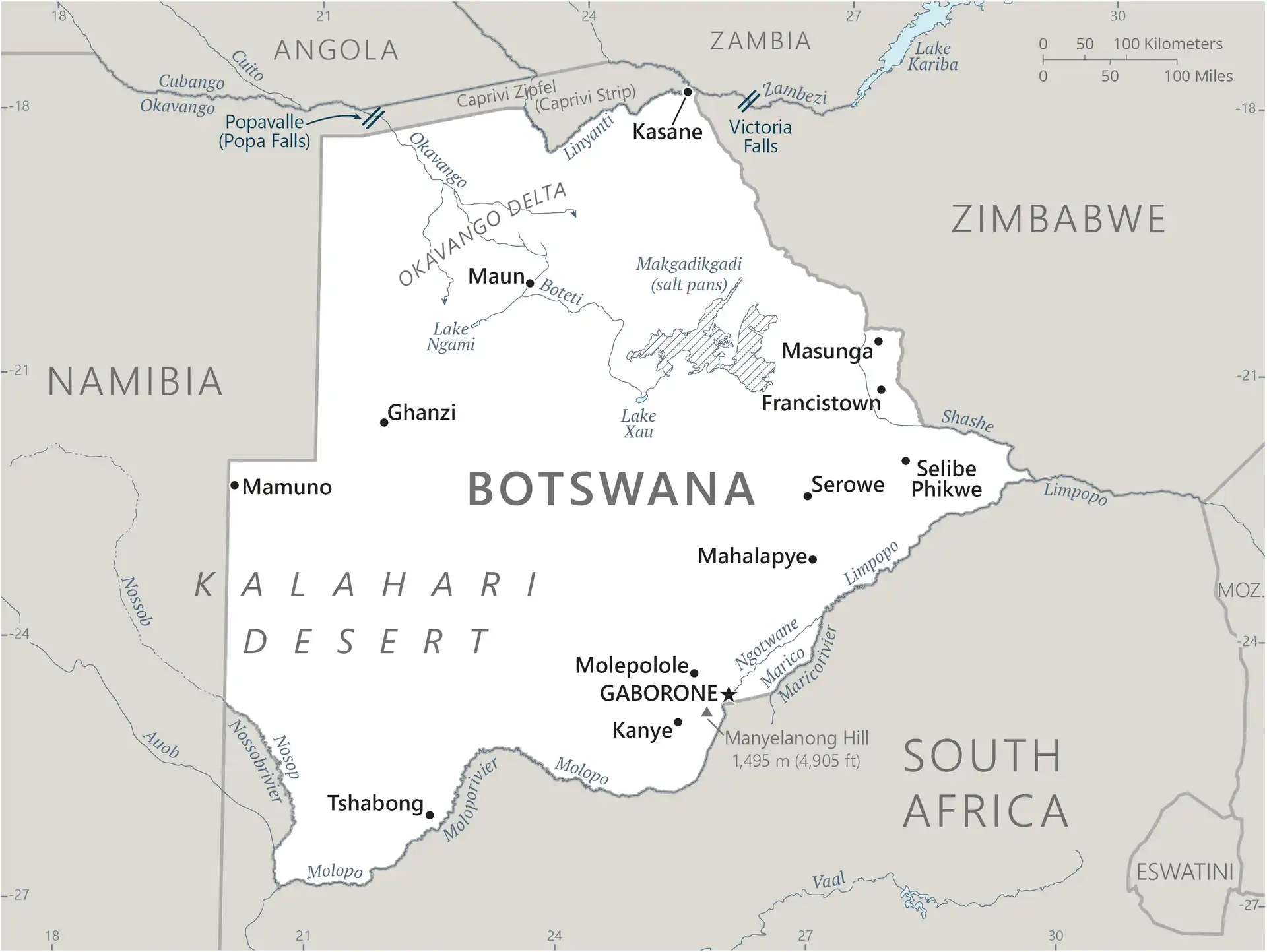
Botswana Country Profile
Key Facts of Botswana

| Government type: | parliamentary republic |
| Capital: | Gaborone |
| Languages: | Setswana 77.3%, Sekalanga 7.4%, Shekgalagadi 3.4%, English (official) 2.8%, Zezuru/Shona 2%, Sesarwa 1.7%, Sembukushu 1.6%, Ndebele 1%, other 2.8% (2011 est.) |
Botswana Demographic Data
Ethnic Groups in Botswana(or Setswana)
Religious Groups in Botswana (2011 est.)
Age pyramid of Botswana

Botswana Economy Statistics
Economic overview of Botswana
good economic governance and financial management; diamond-driven growth model declining; rapid poverty reductions; high unemployment, particularly among youth; COVID-19 sharply contracted the economy and recovery is slow; public sector wages have posed fiscal challenges
Botswana Real GDP (purchasing power parity) in Billion $
Botswana Real GDP per capita in $
Botswana's Exports & Imports in billion $
Top 5 Import Partnerin 2022 (83%) of Botswana
Top 5 Import Commodities in 2022 of Botswana
- diamonds 💎
- refined petroleum ⛽
- trucks 🚚
- raw sugar 🍚
- plastic products ♻️
Top 5 Export Partnerin 2022 (76%) of Botswana
Top 5 Export Commodities in 2022 of Botswana
- diamonds 💎
- copper ore 🟧🪙
- insulated wire 🔌
- coal ⚫
- cattle 🐄
Geography of Botswana
Map of Botswana

Land and Water Distrubtion of Botswana
Natural Resources of Botswana
- diamonds 💎
- copper 🟧🪙
- nickel 🪙
- salt 🧂
- soda ash 🧂
- potash 🪙
- coal ⚫
- iron ore ⛓️
- silver 🪙
Climate inBotswana
semiarid; warm winters and hot summers
History of Botswana - a Summary
In the early 1800s, multiple political entities in what is now Botswana were destabilized or destroyed by a series of conflicts and population movements in southern Africa. By the end of this period, the Tswana ethnic group, who also live across the border in South Africa, had become the most prominent group in the area. In 1852, Tswana forces halted the expansion of white Afrikaner settlers who were seeking to expand their territory northwards into what is now Botswana. In 1885, Great Britain claimed territory that roughly corresponds with modern day Botswana as a protectorate called Bechuanaland. Upon independence in 1966, the British protectorate of Bechuanaland adopted the new name of Botswana, which means "land of the Tswana."
More than five decades of uninterrupted civilian leadership, progressive social policies, and significant capital investment have created an enduring democracy and upper-middle-income economy. The ruling Botswana Democratic Party has won every national election since independence; President Mokgweetsi Eric Keabetswe MASISI assumed the presidency in 2018 after the retirement of former President Ian KHAMA due to constitutional term limits. MASISI won his first election as president in 2019, and he is Botswana’s fifth president since independence. Mineral extraction, principally diamond mining, dominates economic activity, though tourism is a growing sector due to the country's conservation practices and extensive nature preserves. Botswana has one of the world's highest rates of HIV/AIDS infection but also one of Africa's most progressive and comprehensive programs for dealing with the disease.
